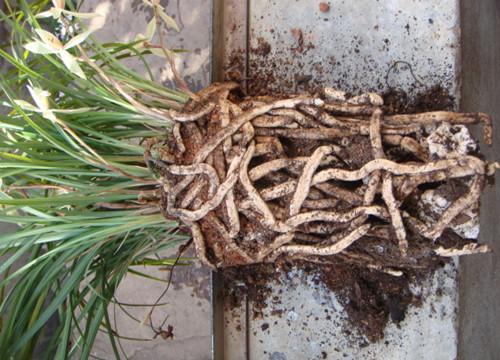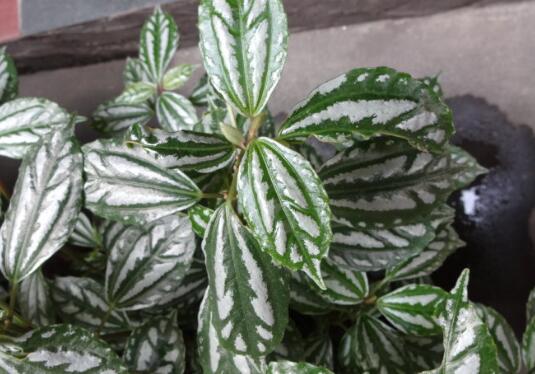Culture method of pocket coconut
Pocket coconut culture method, pocket coconut belongs to the palm family, is a small evergreen tree, pinnate leaves born on the top of the erect stem, the leaves are thin and leathery, rich in luster, its plant type is small, like a beautiful coconut tree, hence the name pocket coconut.
When cultivating, pocket coconuts should be placed in a place where there is no strong light all the year round, and it is best not to put them near the south window. Too much light will cause scorched edges. They are generally used indoors to do small and medium-sized potted plants and watch them on several cases or windowsills. It has small yellow flowers, and the sight of luxuriant branches when it blossoms is the best time to watch.
The suitable growth temperature of pocket coconut is 20-30 ℃, which is more resistant to high temperature, and should not be lower than 10 ℃ in winter. In addition to keeping the basin soil moist, you should often spray water to the leaves and the ground. In summer, you can also occasionally shower a light rain when you put it on the balcony to grow flowers, which is good for its growth. Acid soil should not be used in basin soil, and a small amount of clay should be added. Because there are many roots, they should be planted in high pots. The basin should be changed in spring, and it is appropriate to change the basin every 3 years.
The maintenance of pocket coconut is not difficult, but it is difficult for families to reproduce on their own, and it is not easy for cuttings to survive. It is only suitable for sowing and breeding. This is the introduction of the breeding methods of pocket coconuts.
Cultivation methods of pocket coconuts 1. Potted soil:
Pot pocket coconut should be best planted in well-drained, loose and fertile loam.
2. Lighting:
Pocket coconuts prefer semi-shade, and their leaves will turn yellow in strong sunlight; if they are placed in places where there is not enough light for a long time, the plants will become thin and long. So it's best to put it in a bright place by the window indoors.
3. Temperature:
Pocket coconuts like to be warm, the suitable temperature for growth is 18 mi 25 degrees Celsius, and 13 degrees Celsius goes into dormancy. It's best not to be less than 10 degrees Celsius in winter.

4. Watering:
Pocket coconuts like water, keep the soil moist during growth, and wait until 2/3 of the basin soil is dry during dormancy before watering. In addition, pocket coconuts like high air humidity. If they are too dry, the leaf tips will turn brown. Therefore, during the drying period, such as autumn, measures such as spraying water to the leaves should be taken to improve the air humidity around the plant.
5. Fertilization:
Pocket coconut can apply compound fertilizer to the plant once a month during the growing period.
6. Diseases and insect pests:
Pocket coconut is prone to social brown spot under high temperature and high humidity. If brown spot is found, topiramate or chlorothalonil should be used in time to control the disease. Scale insects are also easy to occur in dry air and poor ventilation. If shell insects are found, they can be sprayed with 8-1000 times omethoate in addition to artificial scraping.
Culture method of pocket coconut
Lighting: pocket coconuts prefer semi-shade, and the leaves will turn yellow in strong sunlight; if placed in places where there is not enough light for a long time, the plant will become thin and long. So it's best to put it in a bright place by the window indoors.
Temperature: pocket coconut likes to be warm, the suitable temperature for growth is 18 Mel 24 degrees Celsius, 13 degrees Celsius goes into dormancy. It's best not to be less than 10 degrees Celsius in winter.
Watering: pocket coconuts like water, keep the soil moist during growth, and wait until 2/3 of the basin soil is dry during dormancy before watering. In addition, pocket coconuts like high air humidity. If they are too dry, the leaf tips will turn brown. Therefore, during the drying period, such as autumn, measures such as spraying water to the leaves should be taken to improve the air humidity around the plant.
Fertilization: compound fertilizer can be applied to the plant once a month during the growing period.
Potted soil: it is best to plant in well drained, loose and fertile loam.
Reproduction: pocket coconuts are generally propagated with seeds.
When raising pocket coconuts, attention should be paid to the following:
1. Beware of the focal edge caused by too much light. Because pocket coconuts prefer a shady environment, indoor cultivation should be placed near the north window, east window or other places with bright scattered light; pocket coconuts are most afraid of direct light, even if exposed to the sun for a short time, it will also cause the leaves to scorch and turn yellow. On the contrary, if it is kept in a dark, dry place for a long time, the color of the leaves will become lighter and lose its luster.
2. Suitable temperature. Generally, the optimum temperature for growth is 20: 30 ℃. In winter, the indoor temperature is between 12 and 14 ℃, and the lowest temperature can not be lower than 10 ℃.
3. Maintain the humidity of the surrounding air. It is necessary to spray water on the leaf surface frequently to increase the air humidity.
4. Acid soil should not be used in basin soil, and a small amount of clay should be added.
5. The basin needs to be changed every 3 years.
6. in the seedling stage, the dilute liquid fertilizer should be applied for 3 or 4 times in spring and spring.
- Prev

How to grow orchids? The six secrets shared by the old master of the orchid, once mastered, you can become a real master of the orchid.
It is said that orchids are difficult to raise, but it is even more difficult to raise them well. I often hear flower friends say that my orchids have not been grown for so long, and they do not look like any spirit, let alone blossom. However, every time I see such a good orchid raised by others, I envy it. So, how to raise orchids?
- Next

How to raise a cold spray
How to raise cold water, cold water, also known as snow grass, flower and leaf nettle, is a perennial herb of Urticaceae. Its underground rhizome is horizontal, the plant height is 30cm to 50cm, the aboveground stem is fleshy and translucent, the internodes are dilated and much branched. Leaves opposite, egg-shaped, leaf tip pointed, three main veins are very obvious
Related
- Fuxing push coffee new agricultural production and marketing class: lack of small-scale processing plants
- Jujube rice field leisure farm deep ploughing Yilan for five years to create a space for organic food and play
- Nongyu Farm-A trial of organic papaya for brave women with advanced technology
- Four points for attention in the prevention and control of diseases and insect pests of edible fungi
- How to add nutrient solution to Edible Fungi
- Is there any good way to control edible fungus mites?
- Open Inoculation Technology of Edible Fungi
- Is there any clever way to use fertilizer for edible fungus in winter?
- What agents are used to kill the pathogens of edible fungi in the mushroom shed?
- Rapid drying of Edible Fungi

